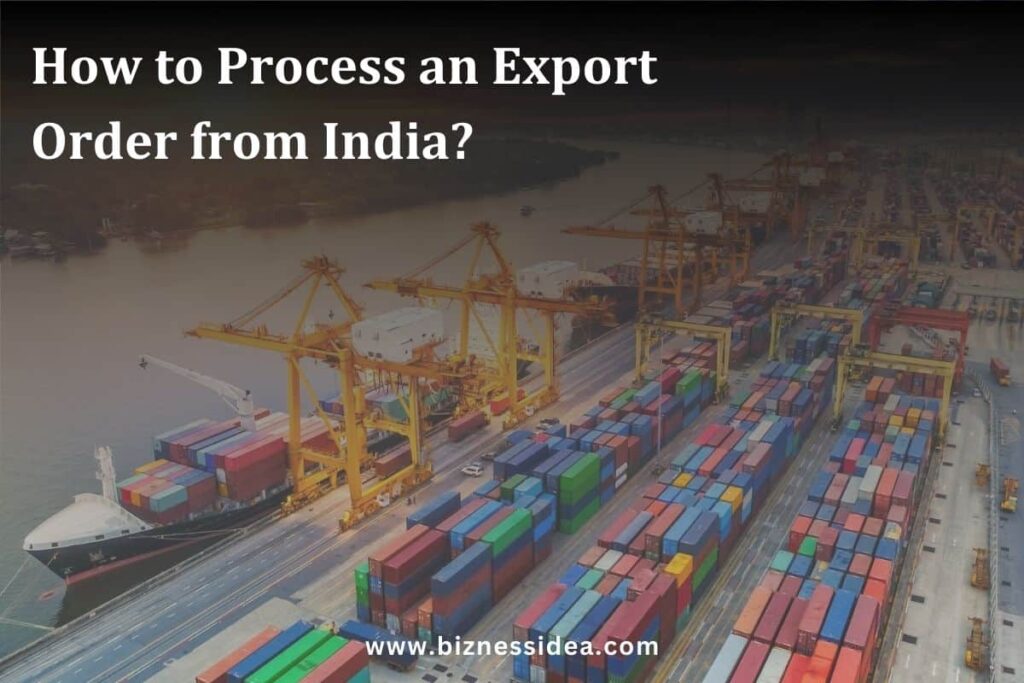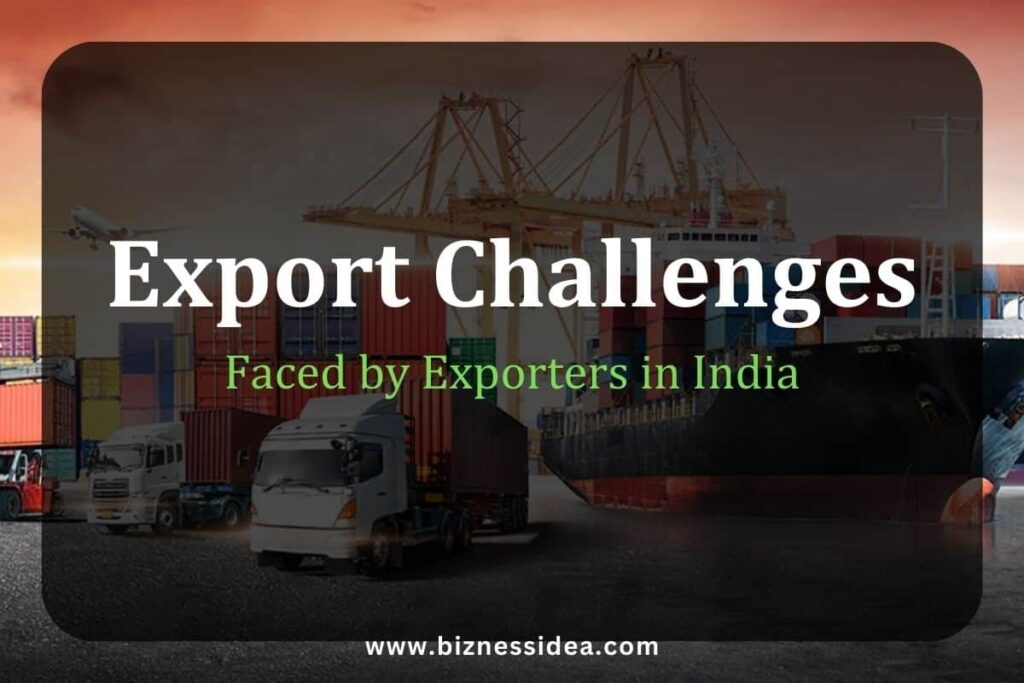Establishing an import and export business in India can be a lucrative venture, offering boundless opportunities for growth and global market penetration. India, with its strategic geographic location and robust economic ecosystem, stands as a prime destination for entrepreneurs aspiring to tap into the vast potential of cross-border trade.
However, embarking on this journey necessitates a nuanced understanding of the intricate processes, regulatory frameworks, and market dynamics inherent to the import and export landscape.
From navigating the legal intricacies and compliance requirements to identifying lucrative markets and optimising supply chain logistics, this article is your indispensable companion on the transformative journey towards establishing an import and export business in India.
Steps to Start an Import and Export Business in India
Exporting is a broad concept that requires thorough preparation before venturing into the business. To initiate an import and export business in India, consider the following steps:
Establish an Organization To Start an Import and Export Business in India
Begin by setting up a sole proprietary concern, partnership firm, or company to start an import and export business by the prescribed procedures, complete with an appealing name and logo.
Opening a Bank Account To Establish an Import and Export Business
Open a current account with a bank authorized to establish an import and export business to deal in foreign exchange.
Obtain a Permanent Account Number (PAN) for Your Import and Export Business
Exporters and importers must acquire a PAN from the Income Tax Department of their import and export business.
Obtain Your Importer-Exporter Code (IEC) Number
In compliance with the Foreign Trade Policy (FTP) 2015-20, securing an IEC is obligatory for import and export business in India. The procedure for obtaining an IEC, which is PAN-based, is outlined in Para 2.05 of the FTP.
Registration cum Membership Certificate (RCMC)
To benefit from concessions under FTP 2015-20 and avail services/guidance, exporters must obtain an RCMC from the relevant Export Promotion Councils, FIEO, Commodity Boards, or Authorities.
Select a Product For Your Import and Export Business
Except for items on the prohibited/restricted list, all goods are freely exportable. Conduct a thorough analysis of export trends to choose the product(s) for export.
Select Markets of Your Import and Export Business
Choose an overseas market based on research covering aspects such as market size, competition, quality requirements, and payment terms. Utilise resources like export promotion agencies, Indian Missions abroad, and trade fairs for information gathering.
Find Buyers For Your Import and Export Business
Engage in activities like trade fairs, buyer-seller meets, and exhibitions, and utilise online platforms to identify potential buyers. Networking through EPCs, Indian Missions abroad, and overseas chambers of commerce can also be beneficial.
Provide Samples of Products of Your Import and Export Business
Provide customised samples to meet foreign buyers’ demands, adhering to FTP 2015-2020 regulations on the export of trade and technical samples.
Pricing/Costing of Your Import and Export Business’ Products
Determine product pricing considering all expenses from sampling to realising export proceeds, based on terms like Free on Board (FOB), Cost, Insurance & Freight (CIF), Cost & Freight (C&F), etc.
Negotiation with Buyers
Consider reasonable allowances or discounts in price after evaluating the buyer’s interest, prospects, and business continuity.
Covering Risks through ECGC
Mitigate payment risks due to buyer/country insolvency by securing an appropriate policy from the Export Credit Guarantee Corporation Ltd (ECGC). Procure credit limits on the foreign buyer from ECGC when orders are placed without advance payments or opening a letter of credit.
How to Process an Export Order?

Initiating an export order involves a series of meticulously planned steps to ensure a smooth transaction and uphold the quality and compliance standards expected by the overseas buyer when establishing an import and export business in India. This process unfolds as follows:
Confirmation of Order
Upon receiving an export order, a thorough examination of its details, including items, specifications, payment conditions, packaging, and delivery schedule, is essential. After scrutiny, the order is formally confirmed, often through a contractual agreement with the overseas buyer.
Procurement of Goods in Import and Export Business
Following order confirmation, prompt actions are taken to procure or manufacture the goods intended for export. It is crucial to adhere strictly to the buyer’s requirements, considering the competitive nature of obtaining the order.
Quality Control
In today’s competitive global market, maintaining stringent quality standards for export goods is imperative. Certain products, such as food, agriculture, fishery, and specific chemicals, may undergo compulsory pre-shipment inspections. Foreign buyers may also specify their standards, necessitating inspections by their designated agencies.
Finance of Import and Export Business
Exporters can access pre-shipment and post-shipment finance from Commercial Banks at favourable interest rates to facilitate their export transactions. During the pre-shipment stage, new exporters can obtain Packing Credit advances, typically ranging from 75% to 90% of the order value, against the lodgment of a Letter of Credit (L/C) or a confirmed order. This advance, granted for 180 days, supports working capital needs such as raw material purchase, labour expenses, packing, and transportation.
Banks adjust the Packing Credit advance from the proceeds of negotiated, purchased, or discounted export bills. For post-shipment financing, exporters can receive up to 90% of the invoice value for the standard transit period. In cases of usance export bills, funding is available up to the notional due date. The maximum period for post-shipment advances is 180 days from the shipment date. Banks reconcile the advances granted by realising the sale proceeds from the export bills. In instances where export bills become overdue, banks apply the commercial lending rate of interest.
Labelling, Packaging, Packing and Marking
Export goods must adhere strictly to the buyer’s instructions regarding labelling, packaging, and packing. Effective packaging ensures the goods reach their destination in optimal condition, aiding in easy handling, maximum loading efficiency, and reduced shipping costs. Proper marking provides essential identification and cargo information.
Insurance
Marine insurance policies are crucial to cover the risks of loss or damage during transit. While exporters usually arrange insurance in CIF contracts, buyers obtain insurance in C&F and FOB contracts.
Delivery
Adhering to the delivery schedule is a vital aspect of export operations. Efficient planning is essential to ensure a prompt and effective delivery process.
Customs Procedures
Acquiring a PAN-based Business Identification Number (BIN) from Customs is imperative before submitting the shipping bill for export goods clearance. Additionally, it is essential to open a current account in the designated bank for the crediting of any drawback amount, and this information must be registered in the system.
For Non-Electronic Data Interchange (Non-EDI) transactions, shipping bills or bills of export should adhere to the prescribed format outlined in the Shipping Bill and Bill of Export (Form) regulations of 1991. Exporters must use distinct forms of shipping bills or bills of export based on the nature of the export, such as duty-free goods, dutiable goods, or exports under drawback.
Under the EDI System, exporters file declarations through Customs Service Centers using a prescribed format. The system generates a checklist for data verification by the exporter/CHA. After verification, the Service Center operator submits the data to the system, generating a Shipping Bill Number. This number is endorsed on the checklist and returned to the exporter/CHA.
In many cases, the system processes the Shipping Bill based on the declarations without human intervention. If the Appraiser Dock (export) orders samples for testing, the Customs Officer may draw two samples from the consignment. The particulars and testing agency details are then entered into the ICES/E system.
Customs House Agents
Exporters can enlist the services of licensed Customs House Agents to facilitate customs clearance processes.
Documentation
The Foreign Trade Policy (FTP) 2015-2020 mandates specific documents for import and export, including the bill of lading/airway bill, commercial invoice cum packing list, and shipping bill/bill of export/bill of entry.
Submission of Documents to Bank
Post-shipment, presenting the required documents to the bank within 21 days is mandatory for onward dispatch to the foreign bank for payment arrangements. The following documents may be needed:
- Bill of Exchange
- Letter of Credit (if the shipment is under L/C)
- Invoice
- Packing List
- Airway Bill/Bill of Lading
- Declaration under Foreign Exchange
- Certificate of Origin/GSP
- Inspection Certificate (wherever necessary)
- Any other document as required in the L/C or by the buyer or statutorily.
Realization of Export Proceeds
As per FTP 2015-2020, export contracts and invoices should be denominated in freely convertible currency, and export proceeds must be realised in such currency, except for exports to Iran. The realisation period for export proceeds is set at 9 months.

Common Challenges Faced by Exporters in India
Following are the top 8 challenges faced by exporters in India:
Lack of Relevant Knowledge
Entering the export business without adequate knowledge poses a significant challenge for many suppliers and exporters in India. Insufficient understanding of minute details often leads to difficulties in navigating the export processes.
High Competition in Global Markets
Indian exporters face intense competition on various fronts in the global market, including quality, production cost, price, and sales. This competition extends not only to international players but also to domestic and local counterparts. Identifying genuine importers becomes crucial, with opportunities often present in markets such as Dubai.
Complicated Documentation
Exporting involves a substantial checklist of essential documents that must be prepared in advance. Missing even a single document during the process can impede the export, as small but necessary documents are sometimes overlooked.
Government Restrictions
Frequent changes in rules and restrictions by government bodies present ongoing challenges for exporters. Recent examples include restrictions on wheat and flour exports. Such bans, along with licensing, customs requirements, quotas, and other formalities, create additional hurdles for exporters.
Subsidies Imposed by First-World Countries
Differences between developed and developing countries lead to varying rules in customs, exports, and licences. Many developed nations offer significant subsidies to their exporters, placing Indian exporters at a competitive disadvantage.
Not Being Well-Versed in Negotiations & Languages
Newcomers in the export industry face risks of exploitation if they lack knowledge of market trends and negotiation skills. Language barriers, specifically in India, further compound these challenges. Seeking guidance from industry experts can address these issues.
Packaging & Products Standards
Meeting high product standards demanded by developed countries is a significant concern for Indian exporters. Products may undergo testing in these countries, and failure to meet standards can result in market loss.
Other Problems
Additional challenges faced by exporters in India include:
- Weather and Climate Impacts during Shipping
- Limited Technological Development
- Low Labour Productivity
- Patent-related Issues
Conclusion
Embarking on the journey to start an import and export business in India is a promising endeavour that offers immense opportunities in the global marketplace.
By navigating the complexities of regulatory frameworks, understanding market dynamics, and implementing strategic planning, entrepreneurs can position themselves for success. The key lies in continuous learning, staying abreast of international trade trends, and leveraging resources effectively.
As India continues to be a crucial player in the world economy, establishing and nurturing an import and export business can be a fulfilling and lucrative venture for those willing to embrace the challenges and seize the vast potential of global trade.
FAQs
Ques. What legal requirements are essential to initiate an import and export business in India?
Ans. To kickstart an import and export business in India, one must obtain an Importer-Exporter Code (IEC) from the Directorate General of Foreign Trade (DGFT). Additionally, understanding and complying with customs regulations and documentation requirements are crucial for a smooth start.
Ques. How can one identify potential markets and assess the demand for specific products?
Ans. Entrepreneurs can conduct market research to identify potential markets by analysing trade data, understanding consumer behaviour, and assessing competition. Utilising resources like trade associations, government reports and industry publications can provide valuable insights into product demand.
Ques. What financial considerations should be taken into account when starting an import and export business?
Ans. Financial planning is essential. Entrepreneurs need to consider the costs associated with obtaining the IEC, transportation, customs duties, and compliance with quality standards. Exploring pre-shipment and post-shipment finance options from commercial banks can help in managing working capital effectively.
Ques. How can one stay updated on changing government regulations and international trade policies?
Ans. Staying informed about regulatory changes is crucial. Entrepreneurs can regularly check official government websites, subscribe to industry newsletters, and participate in trade forums. Engaging with customs consultants or trade associations can also provide real-time updates on policy changes.













